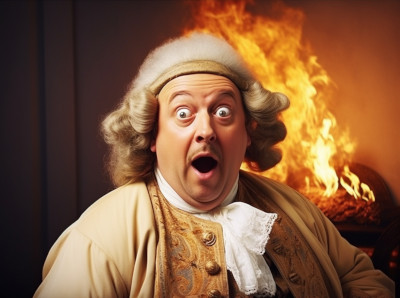The World's Most Famous Farters
A Tribute to the Masters of the Craft
Farting, a universal human experience, has been elevated to an art form by some individuals throughout history. Let’s explore the world’s most famous farters, those who have turned this natural bodily function into a craft, a performance, and even a political statement.

1. Joseph Pujol, “Le Pétomane”: The Fartiste Extraordinaire
Joseph Pujol, known as “Le Pétomane,” was a French flatulist who performed at the Moulin Rouge in the late 19th century1. With incredible control over his abdominal muscles, Pujol could imitate musical instruments and even “sing” operatic arias through flatulence. His performances were a sensation, drawing large crowds and earning him fame as a unique entertainer. Pujol’s artistry challenged societal norms and turned farting into a celebrated form of entertainment.
2. Mr. Methane: The Modern Musical Farter
Mr. Methane, a British performer, has continued the tradition of musical farting into the modern era2. With a combination of humor, music, and incredible control, Mr. Methane has performed on television shows and stages around the world. His act includes farting along to famous tunes, showcasing the versatility and creativity of this unconventional art form.
3. Benjamin Franklin: A Founding Father’s Perspective on Farts
Benjamin Franklin, one of America’s Founding Fathers, wrote an essay titled “Fart Proudly” in 17813. In this humorous and satirical piece, Franklin explored the social taboos surrounding farting and proposed scientific research into making farts more pleasant. Franklin’s essay is a reminder of the universal nature of farting and a testament to his wit and wisdom.
4. Roland the Farter: A Royal Court Jester
Roland the Farter was a medieval court jester who served King Henry II of England4. His annual Christmas performance included a leap, a whistle, and a fart. This unusual act earned him a place in history and a generous land grant from the king. Roland’s story illustrates the timeless appeal of fart humor and its place in royal entertainment.
5. Spontaneous Human Combustion: A Fiery Mystery
While not directly related to famous individuals, the phenomenon of spontaneous human combustion has been linked to methane in the digestive system5. Some theories suggest that a buildup of methane, combined with other factors, could lead to this mysterious and tragic occurrence. While not proven, this connection adds a layer of intrigue to the science of farts.
6. The Farting Preacher: A Comedic Remix
Robert Tilton, a televangelist, became the subject of a comedic remix known as “The Farting Preacher”6. Edited videos that added fart sounds to his sermons became a viral sensation. While not a farter by choice, Tilton’s unintended fame highlights the enduring appeal of fart humor in pop culture.
7. Political Fart Protests: A Statement of Dissent
Throughout history, farting has been used as a form of protest and political dissent. From ancient Rome to modern political gatherings, individuals have used farts to express dissatisfaction and challenge authority. These acts of defiance showcase the symbolic power of farts as a form of non-verbal communication.
A Celebration of Farting’s Rich Legacy
The world’s most famous farters have turned a natural bodily function into a craft, a performance, and a statement. From the stages of the Moulin Rouge to the writings of Benjamin Franklin, farting has transcended its humble origins to become a symbol of creativity, humor, and rebellion. As we celebrate these masters of the craft, we are reminded of the universal nature of farting and its enduring place in human culture.
Sources:
1. “Le Pétomane: Fin de Siècle Fartiste.”
2. Mr. Methane’s Official Website
3. Franklin, B (1781). “Fart Loudly”
5. Nickell, J. (1995). “Not-So-Spontaneous Human Combustion.
